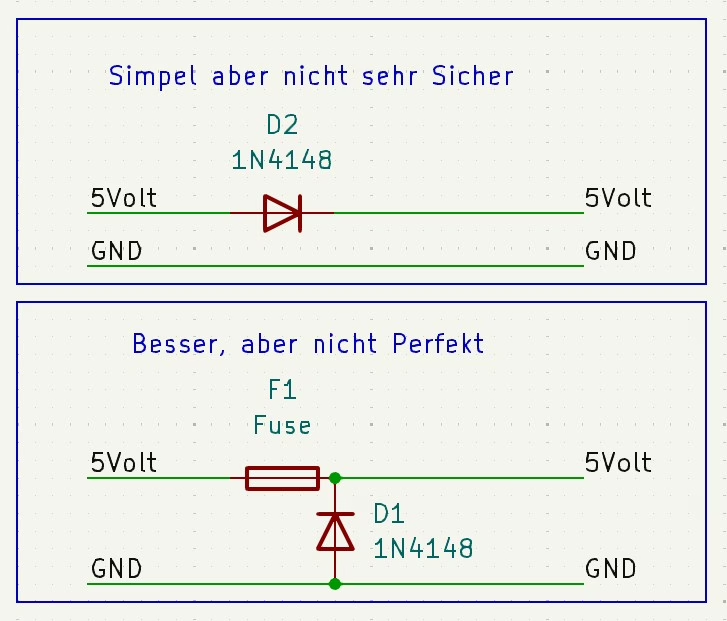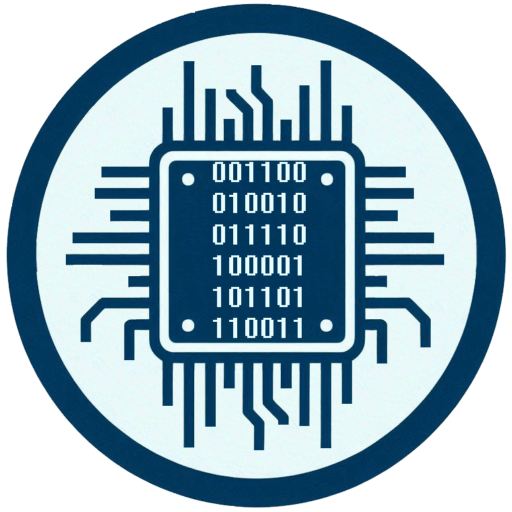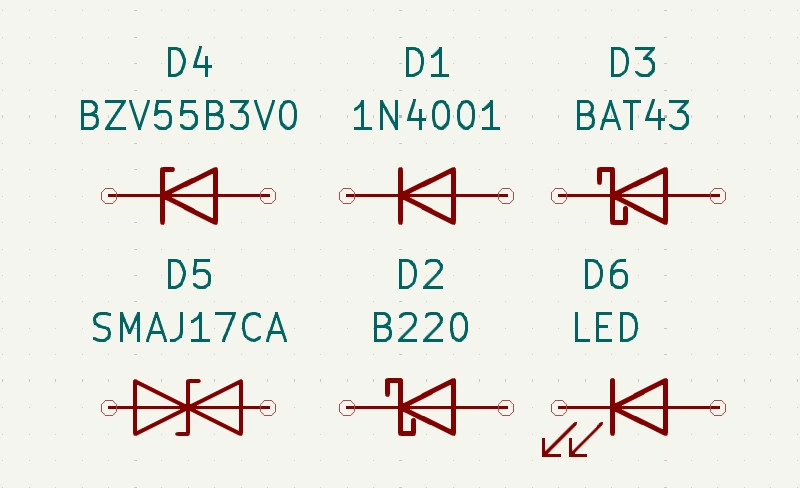Diodes explained simply - how they work, types and applications
-
14. May 2025
Diodes are the secret heroes of many electronic circuits. Whether power supply, LED lighting, voltage limiting or signal paths - they are everywhere. In this article you will find out, what a diode is, how it works and what they are used for. Naturally practical and easy to understand - even if you are just starting out in electronics.
What is a diode?
A diode is an electronic component that passes current in one direction only. It behaves like a non-return valve: In the forward direction it conducts current, in the blocking direction it blocks it - up to a certain limit.
Typical characteristic values of a diode
Forward voltage (Uf): : Voltage at which the diode becomes conductive (e.g. approx. 0.7 V for silicon)
Reverse voltage (Urr): Maximum voltage that may be applied in the reverse direction
Blocking current: Minimum leakage current in reverse direction
Switching time: Time the diode needs to switch (important for fast signals)
How a diode works
The diode consists of a pn junction - i.e. an interface between negatively doped (n) and positively doped (p) semiconductor material.
In the forward direction (plus at the anode, minus at the cathode), the pn junction becomes conductive → current flows.
In blocking direction (plus at the cathode) the junction is blocked → current flow is blocked.
There will be more on p and n doped semiconductor material in another article in the future, as this is more for advanced users.
Overview of different diode types
| Diode | Characteristic | Usage |
|---|---|---|
| Standard diode (e.g. 1N4148) | Simple, fast switching | Rectification, protection |
| Schottky diode | Very low forward voltage (~0.3 V) | Power supply, fast switching |
| Zener diode | Conducts in reverse direction from a certain voltage | Voltage limitation, reference |
| LED (light emitting diode) | Lights up when current flows, polarity-sensitive | Indicators, lighting |
| Rectifier diode (e.g. 1N4007) | For larger currents, more robust | Power supply units, bridge rectifiers |
| Suppressor diode (TVS) | Protects against voltage peaks | ESD protection, overvoltage protection |
Diodes Practical example 1: Diode as reverse polarity protection
A typical application for diodes is polarity reversal protection.
In projects with microcontrollers, modules or LED strips in particular, an incorrectly connected supply voltage (e.g. +5 V and GND reversed) can lead to destruction of the entire circuit.
The risk can be significantly reduced with a diode in series with the supply:
In the correct direction: Diode conducts → circuit runs as desired
In the wrong direction: Diode blocks → Current flow is interrupted
The risk can be further reduced with a diode in the blocking direction and a fuse:
In the correct direction: diode blocks → circuit runs as desired and current flows through the fuse
In the wrong direction: Diode conducts → Current flow ‘unlimited’ possible → Fuse “blows”
Important:
This method only works, if the power supply unit or power source cannot supply extremely high currents. In professional applications, the following is also often used:
a fuse (e.g. 500 mA or 1 A)
or a self-resetting PTC
is used, which switches off in the event of an error.
For critical circuits, an active protective circuit with P-channel MOSFET is often the better choice - it protects more reliably and avoids voltage loss, more on this in the future.
It is possible that the circuit will still be damaged due to inertia of the fuse or for other reasons in exactly your periphery, diode and fuse are better than nothing, but not the non plus ultra.

Diodes Practical example 2: Light emitting diode (LED)
A LED (Light Emitting Diode) is nothing more than a diode that emits light when conducting.
Everyone really knows this - and here you can see the one-way character of the diode even with the naked eye:
Correct direction: LED lights up
Wrong direction: LED stays off
By the way: Diodes are not only there to light up - they can also work the other way round. For example, if you direct light onto a germanium diode or a classic glass body diode, it generates a small electrical voltage.
This is basically the same physical principle as with a solar panel - as this also consists of diode structures that supply energy when exposed to light.
The voltage in normal diodes is very low and hardly usable - but the effect shows that diodes react to light just as much as they can generate it.
What you should look out for with diodes
Reverse polarity: A diode with the wrong polarity can block or even damage your circuit.
Observe the forward voltage: Particularly important for LEDs and Schottky diodes to function correctly.
Cooling at high currents: Power diodes can become hot.
Maintain reverse voltage: Exceeding this value destroys the diode.
Conclusion: Diodes are part of the basic equipment
Diodes are simple but incredibly useful components. Whether securing the direction of current flow, limiting voltages or conducting signals - with the right understanding, you can use them specifically in your circuits. And as soon as you understand the diode, it will also be much easier to understand transistors, MOSFETs and other semiconductors.

